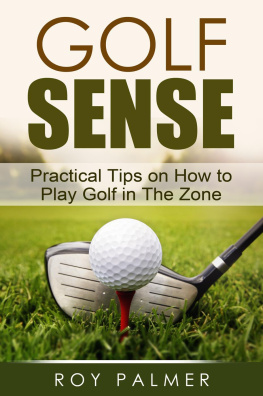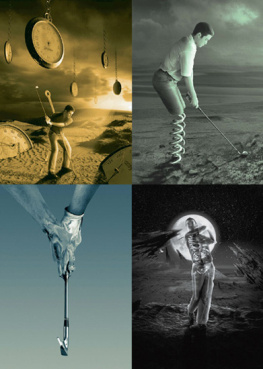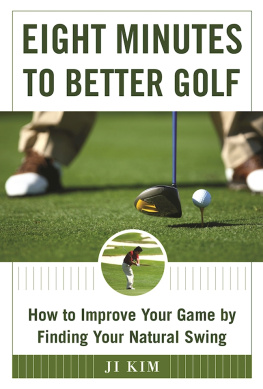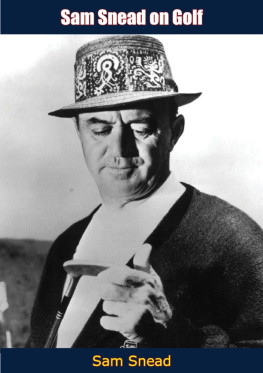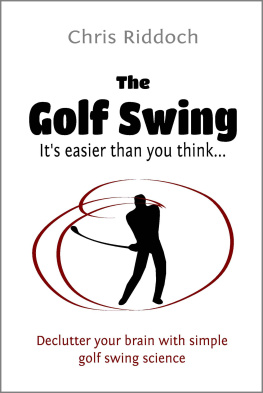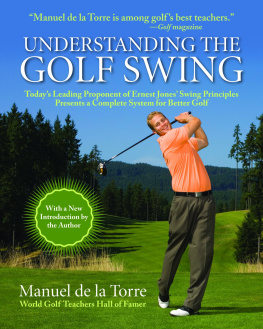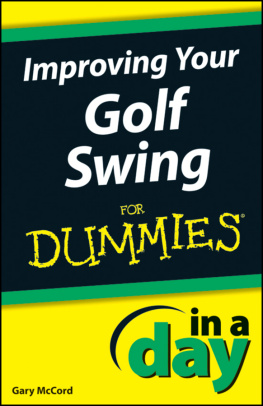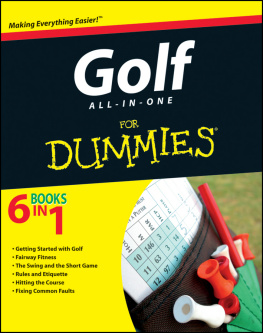Knudson George - The natural golf swing
Here you can read online Knudson George - The natural golf swing full text of the book (entire story) in english for free. Download pdf and epub, get meaning, cover and reviews about this ebook. City: Toronto, year: 1989;1988, publisher: McClelland & Stewart, genre: Religion. Description of the work, (preface) as well as reviews are available. Best literature library LitArk.com created for fans of good reading and offers a wide selection of genres:
Romance novel
Science fiction
Adventure
Detective
Science
History
Home and family
Prose
Art
Politics
Computer
Non-fiction
Religion
Business
Children
Humor
Choose a favorite category and find really read worthwhile books. Enjoy immersion in the world of imagination, feel the emotions of the characters or learn something new for yourself, make an fascinating discovery.

- Book:The natural golf swing
- Author:
- Publisher:McClelland & Stewart
- Genre:
- Year:1989;1988
- City:Toronto
- Rating:5 / 5
- Favourites:Add to favourites
- Your mark:
- 100
- 1
- 2
- 3
- 4
- 5
The natural golf swing: summary, description and annotation
We offer to read an annotation, description, summary or preface (depends on what the author of the book "The natural golf swing" wrote himself). If you haven't found the necessary information about the book — write in the comments, we will try to find it.
The natural golf swing — read online for free the complete book (whole text) full work
Below is the text of the book, divided by pages. System saving the place of the last page read, allows you to conveniently read the book "The natural golf swing" online for free, without having to search again every time where you left off. Put a bookmark, and you can go to the page where you finished reading at any time.
Font size:
Interval:
Bookmark:
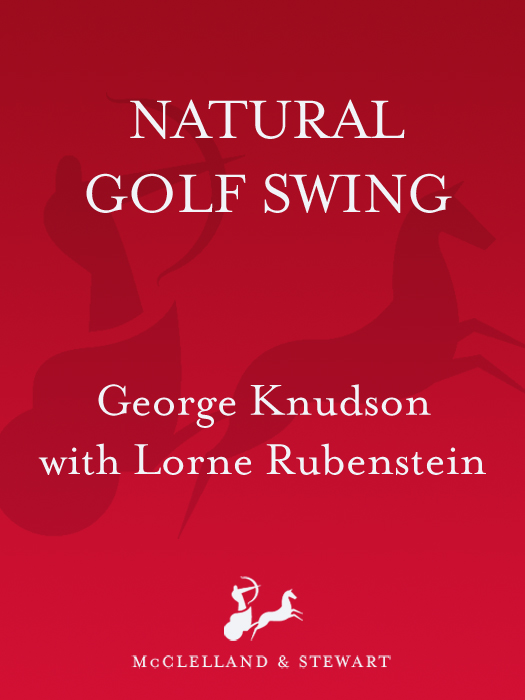
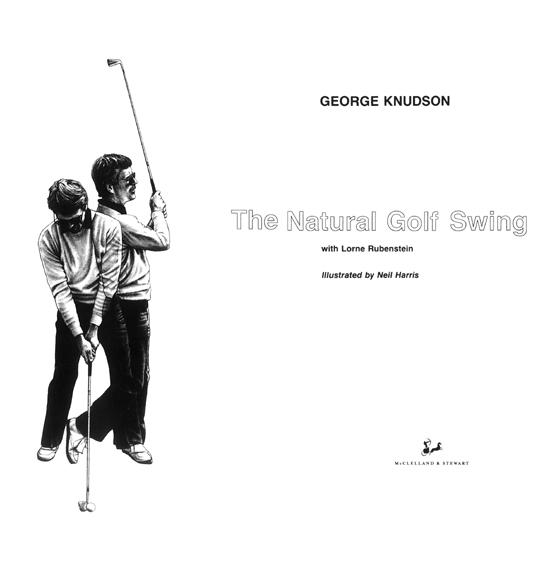
Copyright 1988 George Knudson and Lorne Rubenstein
Illustrations Copyright 1988 Neil Harris
All rights reserved. The use of any part of this publication reproduced, transmitted in any form or by any means, electronic, mechanical, photocopying, recording, or otherwise, or stored in a retrieval system, without the prior written consent of the publisher or, in case of photocopying or other reprographic copying, a licence from the Canadian Copyright Licensing Agency is an infringement of the copyright law.
Library and Archives Canada Cataloguing in Publication
Knudson, George, 1937-1989
The natural golf swing
eISBN: 978-1-55199-482-6
1. Swing (Golf). I. Rubenstein, Lorne. II. Title.
GV979.S9K68 1988 796.3523 C88-093243-0
We acknowledge the financial support of the Government of Canada through the Book Publishing Industry Development Program and that of the Government of Ontario through the Ontario Media Development Corporations Ontario Book Initiative. We further acknowledge the support of the Canada Council for the Arts and the Ontario Arts Council for our publishing program.
McClelland & Stewart Ltd.
75 Sherbourne Street
Toronto, Ontario
M5A 2P9
www.mcclelland.com
v3.1
I N THE WINTER OF 1968 when I was still a teenager, I thought golf was all feel and that there was no need to learn the basics. Having achieved a fairly low handicap for a golfer who relied on feel and instinct alone, I smugly thought that nobody could teach me anything about the swing. I wasnt willing to take the time to learn the swing, of course, but thats another story. My idea of instruction was a quick tip in a golf magazine. If it didnt work, I dropped it. Cant be right, I thought.
That winter of 1968 I was very aware of what George Knudson was doing on the U.S. professional circuit. It was my custom to borrow my fathers car and drive to the corner of Bathurst St. and Lawrence Ave. in Toronto every night around nine oclock to pick up The Globe and Mail and check the golf news. First came the news that Knudson had won the Phoenix Open. A week later, he had won the Tucson Open. Two in a row.
Ill never forget my reaction the Sunday night I learned that George had won in Tucson. Since he was four shots from the lead heading into the last round, I figured he might finish well up in the list, but surely he wouldnt win. I drove to the corner to see where he did finish.
Unable to wait until I got home, I turned the corner, stopped the car, and turned on the interior lights. There it was. Knudson had won for the second week in a row. I was ecstatic. I didnt know George at all then, but I felt so happy for him. I also felt hed done something worth pursuing: he had evidently gotten the best out of himself. Somehow I imagined that this was what golf was all about, and that maybe one day I too could perform to the best of my ability. Georges wins gave me confidence.
But then I had to think things over. George knew the golf swing. I had often read that he was a so-called pure swinger. Jack Nicklaus had said he had a million-dollar swing. Golfers I met around Toronto courses told me that Knudson swung the club better than anybody since Ben Hogan. They told me hed studied it, and that he had it figured out.
Gradually, I came to accept that there was a lot more to a good golf swing than feel and instinct. You had to know what you were doing. Knudson knew.
Twenty years later, I feel fortunate to have gotten to know George well and to have written this book with him. When he first looked at my swing a decade ago on the range at Glen Abbey, he told me it wasnt bad for a left-hander. Trouble was, I swing right-handed. George has helped me understand the golf swing since then. The game is so much more enjoyable for me now.
Anybody who knows George knows that he puts his heart into everything he does. Hes an inspiration to his friends and I know hell be an inspiration to all golfers who take the time to understand the golf swing he teaches in these pages. Golf can be fun, George says, and he means it. Hes a special guy, one of a kind.
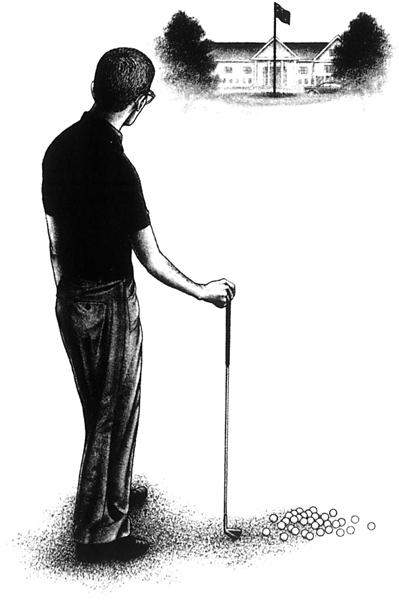
P ICTURE A KID hitting golf balls on a practice range. Hes hitting the ball with all his strength, thrilled by the idea of going at it as hard as he can. Funny thing, though. The ball doesnt seem to go far or straight. Hitting at the ball doesnt seem to work. Keeping his eye on the ball, staring at it, and focusing on it so that he can make contact with it isnt producing very satisfying shots.
That kid was me as a twelve-year-old at the St. Charles Golf and Country Club in Winnipeg, my birthplace. I worked in the backshop there, shagged balls for the pro, Les Beaven, and practised every chance I got. Practising was my thing. It got to the point where I practised one hour for every hour I was on the course. I could hardly wait to get on the range.
Like most youngsters, I was taken with the long ball. And how do you hit the long ball? Simple. You hit the ball hard. Take that club in your hands and swing it with your hands and arms as fast as you can.
But this didnt work. I wasnt getting anywhere. There was no consistency. Id catch the ball solidly one time and then mis-hit it so badly the next time I could feel the vibration in the shaft through my fingers and in my arms. It didnt make sense. Wasnt the idea to hit the ball? And isnt that what I was doing, trying to get the clubface squarely behind the ball at impact?
Luckily, I accidentally came across something that has informed the basis of my thinking on the swing. A giant flagpole that stood in front of the St. Charles clubhouse caught my eye as I stood on the range. It wasnt doing me any good glaring at the ball and trying to hit the thing, so I decided to focus my attention on the pole. It became my target. I immediately started making better golf swings and getting more satisfactory results.
My reasoning went like this. I had been slapping at the ball while trying to hit it. After I hit a shot I didnt like Id move the ball backward or forward in my stance, figuring that maybe I wasnt catching it at the right time in my swing. Or Id fiddle with my swing by changing the angle at which I came into the ball or messing with the way I took the club back. If it worked for a shot, I thought I had the answer. It was all trial and error and it was mostly error.
My main mistake was that I had made the ball the most important consideration. The ball was everything; thats where I directed my concentration and energy. But it kept me from making a swing. I was hitting at the ball, not through it. I wasnt making a swing. I was chopping at the ball, cutting myself off. I needed something to take my eye and mind off the ball. The flagpole was perfect for that purpose.
The flagpole became my target. So what if it was about five hundred yards away from where I stood on the practice tee? That was the point. I couldnt make the ball go that far, but I could focus on a point well beyond the ball. As I look back on my thirty-five years or so of thinking about the swing, I realize that the flagpole at St. Charles had everything to do with the development of my thoughts on golf as a target game and on the swing as a motion. The flagpole became my target, not the ball.
Font size:
Interval:
Bookmark:
Similar books «The natural golf swing»
Look at similar books to The natural golf swing. We have selected literature similar in name and meaning in the hope of providing readers with more options to find new, interesting, not yet read works.
Discussion, reviews of the book The natural golf swing and just readers' own opinions. Leave your comments, write what you think about the work, its meaning or the main characters. Specify what exactly you liked and what you didn't like, and why you think so.

